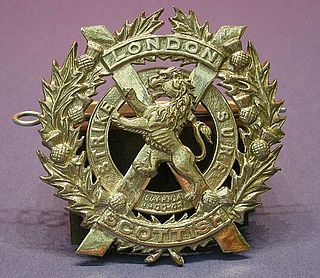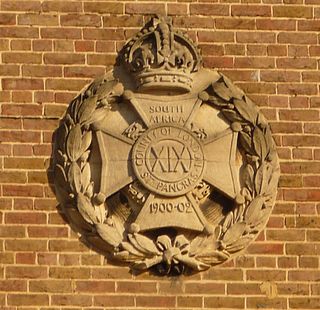 W
W45th Light Anti-Aircraft Regiment, Royal Artillery, was a British Territorial Army (TA) unit formed in July 1940. After serving in Anti-Aircraft Command during the Battle of Britain and The Blitz, it went to North Africa as part of Operation Torch] and fought in Tunisia and Italy. It ended World War II as a garrison regiment.
 W
WThe 5th Battalion, Lincolnshire Regiment, was a volunteer unit of Britain's Territorial Army from 1900 until 1967, serving as infantry on the Western Front during the First World War and as an air defence unit during and after the Second World War.
 W
WThe 1st Lincolnshire Artillery Volunteers were formed in 1860 as a response to a French invasion threat. They fought on the Western Front during World War I. In World War II, the unit took part in the Battle of France and Dunkirk evacuation, the Anglo-Iraqi War with 'Kingcol', the Western Desert Campaign in which it distinguished itself at the Battle of Sidi Rezegh, and finally fought as infantry in the Chindits. The unit was disbanded in 1947.
 W
WThe 5th Battalion, South Lancashire Regiment, was a unit of the British Army's Reserve Forces first established in St Helens, Merseyside, in 1860. It served as infantry in some of the bitterest fighting on the Western Front in World War I and as a searchlight regiment in Anti-Aircraft Command during World War II.
 W
W97th Heavy Anti-Aircraft Regiment, Royal Artillery, was an air defence unit of Britain's Territorial Army (TA) formed during the period of international tension leading up to the outbreak of World War II. It was raised as a duplicate battalion by the famous London Scottish Regiment. The unit defended London during The Blitz and then served in Sicily and Italy, both in the anti-aircraft (AA) and medium artillery roles. The regiment continued in the postwar TA until amalgamated in 1955.
 W
W45th Light Anti-Aircraft Regiment, Royal Artillery, was a British Territorial Army (TA) unit formed in July 1940. After serving in Anti-Aircraft Command during the Battle of Britain and The Blitz, it went to North Africa as part of Operation Torch] and fought in Tunisia and Italy. It ended World War II as a garrison regiment.
 W
WThe 5th Battalion, Lincolnshire Regiment, was a volunteer unit of Britain's Territorial Army from 1900 until 1967, serving as infantry on the Western Front during the First World War and as an air defence unit during and after the Second World War.
 W
W97th Heavy Anti-Aircraft Regiment, Royal Artillery, was an air defence unit of Britain's Territorial Army (TA) formed during the period of international tension leading up to the outbreak of World War II. It was raised as a duplicate battalion by the famous London Scottish Regiment. The unit defended London during The Blitz and then served in Sicily and Italy, both in the anti-aircraft (AA) and medium artillery roles. The regiment continued in the postwar TA until amalgamated in 1955.
 W
WThe 5th Battalion, South Lancashire Regiment, was a unit of the British Army's Reserve Forces first established in St Helens, Merseyside, in 1860. It served as infantry in some of the bitterest fighting on the Western Front in World War I and as a searchlight regiment in Anti-Aircraft Command during World War II.
 W
WThe East Riding Royal Garrison Artillery (ERRGA) was a part-time unit of Britain's Royal Artillery based at Hull in the East Riding of Yorkshire. It provided coastal defence artillery along the Humber Estuary from 1908 to 1956, manned siege batteries on the Western Front during World War I at the Somme and Ypres and played a role in the pursuit of the German army during the Hundred Days Offensive. It served as infantry in Allied-occupied Germany after World War II. Its successor units in the Territorial Army included anti-aircraft artillery and field engineers.
 W
WThe 1st Dorsetshire Artillery Volunteers and its successors were part-time coast defence units of the British Army from 1859 to 1956. Although these units saw no action, they protected the Dorset Coast, including the naval base of Portland Harbour, in both World Wars and also supplied trained gunners to siege batteries engaged on the Western Front during World War I. The unit continued in the Territorial Army after World War II.
 W
WThe Pembroke Royal Garrison Artillery was a part-time unit of the British Army that defended the coast of West Wales during both world wars. Although it never saw action in its coastal defence role, it manned a number of siege batteries of heavy howitzers for service on the Western Front and Italian Front in World War I.
 W
WThe 19th Battalion, London Regiment was a Volunteer unit of the British Army in existence from 1860 to 1961 under various titles. A detachment served in the Second Boer War and two full battalions fought in World War I, receiving the surrender of Jerusalem and crossing the Jordan among other exploits. During World War II the regiment operated as a searchlight unit and briefly as an infantry battalion, before becoming an anti-aircraft regiment in the postwar years.
 W
WThe 36th (Middlesex) Searchlight Regiment was a volunteer air defence battalion of Britain's Territorial Army (TA) from 1936 until 1961, at first as part of the Royal Engineers, later in the Royal Artillery. As part of 40th Anti-Aircraft Brigade it defended air bases in East Anglia through the Battle of Britain and the Blitz. Towards the end of 1944 the unit underwent infantry training, serving briefly in Norway at the end of the war. After the war, the 36th continued as a TA unit, with some women serving with it. In 1961, the remnants of the regiment amalgamated with others to form a combined infantry battalion, and all links with air defence were severed.
The Liverpool Rifles was a unit of the Territorial Army, part of the British Army, formed in Lancashire as a 'Rifle Volunteer Corps' (RVC) in 1859, becoming a battalion of the King's Regiment (Liverpool) in 1881. It saw action on the Western Front in the First World War and later became a searchlight unit of the Royal Artillery in the Second World War.
 W
W48th (Hampshire) Searchlight Regiment, Royal Artillery was an air defence unit of Britain's Territorial Army (TA) formed just before the outbreak of World War II from existing searchlight companies of the Royal Engineers. It served in Anti-Aircraft Command until 1944, including the Portsmouth Blitz and Operation Diver. At the end of the war it formed an infantry unit for garrison duties in liberated Europe. It continued in the postwar TA until AA Command was disbanded in 1955.
 W
WThe 2nd Northumberland Rifle Volunteer Corps, also referred to as the Tynemouth Rifles, was an infantry unit of Britain's part-time force, the Territorial Army. The corps was raised during the expansion of the Volunteer movement in the 1850s and then served with the Territorial Force during the First World War. It converted to an anti-aircraft role just prior to Second World War, and continued to serve until it was amalgamated in 1950.
 W
WThe 2nd Northumberland Rifle Volunteer Corps, also referred to as the Tynemouth Rifles, was an infantry unit of Britain's part-time force, the Territorial Army. The corps was raised during the expansion of the Volunteer movement in the 1850s and then served with the Territorial Force during the First World War. It converted to an anti-aircraft role just prior to Second World War, and continued to serve until it was amalgamated in 1950.